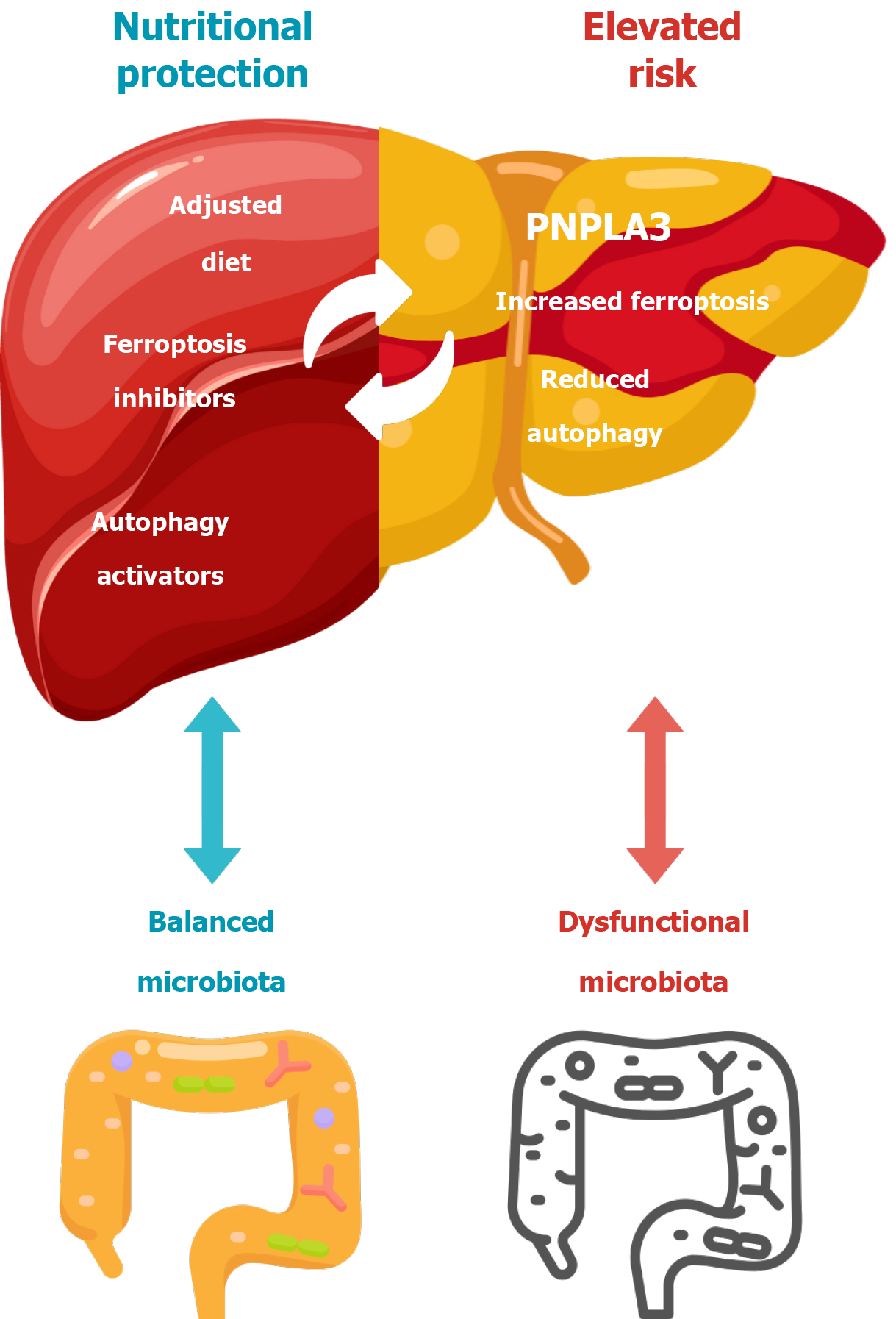Copyright
©The Author(s) 2025.
World J Hepatol. Aug 27, 2025; 17(8): 108182
Published online Aug 27, 2025. doi: 10.4254/wjh.v17.i8.108182
Published online Aug 27, 2025. doi: 10.4254/wjh.v17.i8.108182
Figure 1 Epigenetic modifications induced by environmental factors in the progression of metabolic dysfunction-associated steatotic liver disease.
Environmental signals such as diet and personal habits can promote changes in the microenvironment, which destabilizes homeostasis and may cause epigenetic modifications. DNA methylation, histone modification and microRNA-induced mRNA degradation are some of the examples of epigenetic modification that promote the progression of metabolic dysfunction-associated steatotic liver disease.
Figure 2 Integrated mechanisms of metabolic dysfunction-associated steatotic liver disease pathogenesis and therapeutic targets.
Schematic representation of the integrated mechanisms involved in metabolic dysfunction-associated steatotic liver disease (MASLD) pathogenesis and therapeutic intervention. The illustration highlights the role of PNPLA3 in modulating hepatic susceptibility to damage, driven by ferroptosis, impaired autophagy, and microbiota dysregulation. Nutritional strategies, ferroptosis inhibitors, and autophagy activators are depicted as protective factors that enhance cellular resilience, mitigate oxidative stress, and promote lipid homeostasis. Furthermore, the model underscores the impact of microbiota balance in reducing hepatic inflammation and preventing MASLD progression.
- Citation: Rodriguez S, Dahlem MLF, Rossoni C, Marroni NP, Marroni CA, Fernandes SA. Nutrients as epigenetic modulators in metabolic dysfunction-associated steatotic liver disease. World J Hepatol 2025; 17(8): 108182
- URL: https://www.wjgnet.com/1948-5182/full/v17/i8/108182.htm
- DOI: https://dx.doi.org/10.4254/wjh.v17.i8.108182










